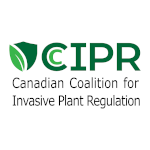Invasive plants continue to spread across Canada and cause ecological, economic, and health harm. Horticulture is the primary source of that spread, and you can help reduce it. Below are practical steps for gardeners, educators, land stewards, nurseries, and municipalities who want to be part of the solution.
Top Five Actions
Learn which plants pose the highest risk
Become familiar with high-risk invasive plants that are sold or regulated in your region. Awareness is the foundation of prevention.
(See lists of invasive plants)
Lead by example
Avoid purchasing invasive plants and remove them where possible. Role modelling has a powerful ripple effect within communities.
Educate and engage others
Use posts, talks, posters, stories, photos, or videos to show people what invasive plants look like and why prevention matters.
Engage municipal leadership
Ask your mayor or council to develop a strategic plan for invasive species prevention and to consider bylaws that reduce local spread. Share our resolution calling for coordinated Federal action.
Support stronger provincial and federal action
Contact your municipal council, MLA or MPP, and MP to share your concerns (links below). Advocate for modern, coordinated regulations and improved plant risk screening. Share our publication Reducing the sales of invasive plants in Canada: to safeguard biodiversity and human health (2024).
Deepen Your Impact
Talk to nurseries and landscapers
Encourage businesses to discontinue sales of high-risk species and highlight the ecological and economic benefits of prevention. Share plant lists or other regionally relevant resources. (Sample letter for nursery owners). Ask them to adopt the National Voluntary Code of Conduct for the Ornamental Horticulture Industry.
Connect with community stewardship
Volunteer with groups that monitor or remove invasive plants. First-hand experience strengthens advocacy and deepens understanding.
Contact the media
Share your story or local examples of invasive plant impacts. Raising public awareness helps build momentum for change.
(Press Release, September 1, 2022.)
Outreach Tools and Resources
Key messages and educational materials
- Two-page CCIPR overview, as pdf
- Two-minute CCIPR mission video
- Presentation for Master Gardeners on reducing the sale and movement of invasive ornamental plants
https://youtu.be/RvKU-n2I4vM - Close the Garden Gate series by C. Kavassalis
https://www.youtube.com/channel/UCupTpE7DqUPdeg8pix6IHLA - Roots of Displacement: The Legacy of Colonization
https://youtu.be/ZUWMPLarLCU?t=2817 - PDF presentation on why prevention is key
Social media ideas
- Stop the Flow png poster featuring periwinkle.
- Stop the Spread pdf poster featuring hogweed, multiflora rose, and parrot’s feather.
- Did you know png post featuring 28 plants that should be regulated in Ontario.
- Prevention is key showcases the impact of infestations.
- Share your story encourages the sharing of stories and photos to personalize the problem
- Did you know? – horticulture is the primary pathway for invasive plant introductions.
- Urgent action is needed – focuses on the economic costs.
- Action is Needed Now variation on Stop the Spread above.
Please share your own ideas, or create new ones tailored to your region. You are welcome to use our CCIPR Logo in English and for our CCRPE en Français friends.
